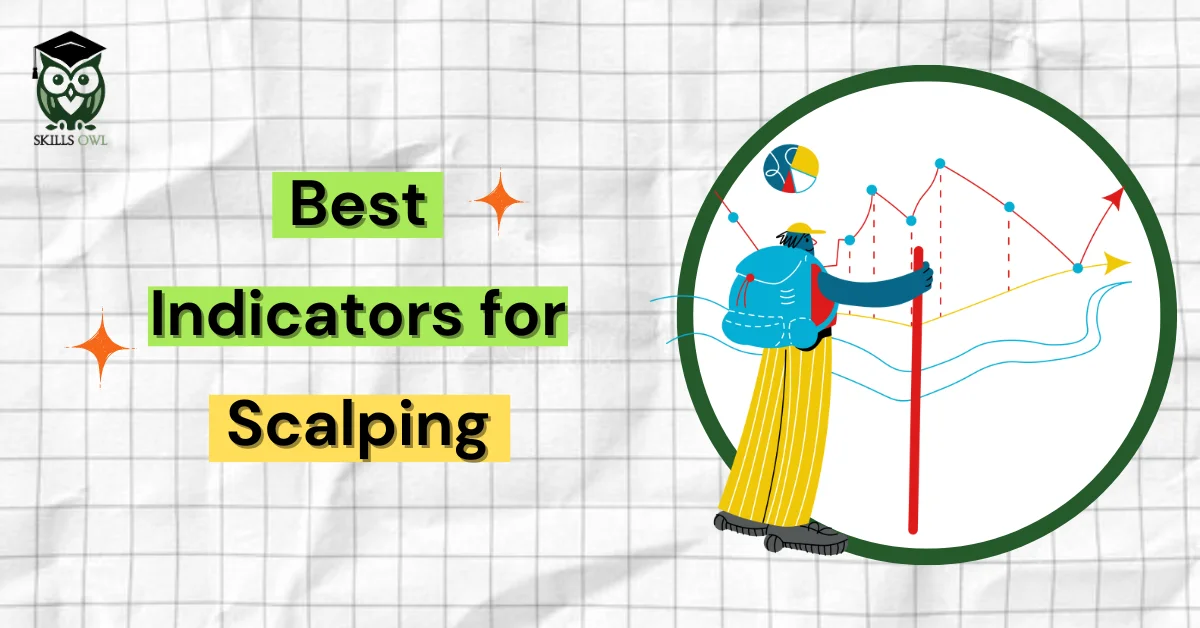
10 Best Indicators for Scalping
What is scalping?
Scalping is a rapid trading technique that aims to gain profits from minimal price fluctuations within the same day. Generally, high-frequency traders engage in scalping and are called scalpers. These scalpers take part in multiple traders for only seconds or minutes and take advantage of brief market inefficiencies, liquidity variations, and volatility. The main goal of scalping is to accumulate a set of small profits and convert them into substantial gains in the long term.
Best indicators for Scalping
1. Moving Averages
- Simple Moving Averages (SMA): It monitors the average price across a set number of periods. Short-term SMAs, like 5 or 10-period averages, are commonly used to spot trends.
- Exponential Moving Average (EMA): It emphasizes recent price data which results in quicker responses to price fluctuations. Scalpers commonly prefer the 9 EMA and 21 EMA indicators.
2. Stochastic Oscillator
The Stochastic Oscillator measures a security’s closing price against its previous prices during a set period. Readings above 80 suggest overbought conditions, whereas readings below 20 indicate oversold conditions. This technique helps in identifying potential reversals in brief time spans.
3. Volume Weighted Average Price (VWAP)
The VWAP calculates the average price of a security traded during the day, considering both volume and price. This tool is helpful for assessing a stock’s overall trend and finding potential entry opportunities.
4. Relative Strength Index (RSI)
It is a momentum oscillator which checks the speed and trend of price movements. An RSI reading above 70 signifies overbuying, while below 30 indicates overselling. Scalpers often use a modified RSI (e.g., 5 or 7 periods) to identify quick entry and exit points.
5. Parabolic Stop and Reverse (SAR)
The Parabolic SAR is used to specify the momentum direction of an asset and identify the potential moment for a momentum shift. It is required for setting up trailing stops, especially in scalping strategies.
6. Price Action
Price action includes analysing fundamental price shifts, patterns, and candlestick formations. By examining the unprocessed price data, traders can quickly make decisions without the delay of conventional indicators.
7. Moving Average Convergence Divergence (MACD)
The MACD acts as a tool to find out changes in the trend strength, direction, momentum, and duration. Traders involved in scalping often focus on the intersections of the MACD line and the signal line to quickly enter and exit trades.
8. Bollinger Bands
It consists of a centre band, usually a 20-period SMA, lined by two outer bands set at standard deviations from the center. These bands are useful in identifying overbought and oversold conditions, helping in identifying potential reversal zones, particularly in scalping tactics.
9. Volume
Volume indicators are crucial for confirming the strength of a market shift. When involved in scalping, abrupt increases in volume can indicate the start of a significant movement that can be used to achieve quick profits.
10. Pivot Points
Pivot points consist of horizontal support and resistance lines. These are used by traders to predict potential price reversals. Scalpers frequently use pivot points on shorter time frames to identify intraday support and resistance levels.
Who can participate in scalping?
Scalping as a trading method asks for Specific skills, experience, and discipline. Scalpers can use specialized trading tools and algorithms to detect and automate their trades. Since scalping is very fast-paced in nature, it is not advisable for beginners as it can lead to significant losses if the trader does not have the required expertise and emotional resilience. Apart from this, It demands constant market monitoring, so traders with limited time or the ones who prefer a more passive approach should avoid scalping. Scalping can also result in increased trading fees and taxes due to the high frequency of intraday trades.
How to limit risk exposure in scalping?
In scalping the holding periods are very short so the main risk is that the price of a stock will move against a trade in the very short term. To reduce this risk, scalpers usually set strict stop-loss orders to let go of a holding if it does not go as planned.
Conclusion
There is no guarantee of success in scalping but traders can use multiple indicators to enhance the strength of their strategy. Due to the quick pace of scalping, the chances of losses are high if the trades go against the trader. Hence, scalpers should have a precise risk management strategy at hand. Before entering into real trading scenarios it is a good idea to practice and sharpen your skills and strategy in a simulated environment because scalpers can no longer depend on real-time market depth analysis for timely buy and sell signals to secure numerous small profits in a regular trading day. Although, what they can do is adjust to the new electronic landscape by using the technical indicators mentioned above.
Frequently Asked Questions
Scalping involves short-term trading and is completely legal, permitted by both exchanges and brokerages.
Scalpers often use brief timeframes like 1 minute, 5 minutes, or 15 minutes, depending on the market conditions and their preference for the speed of execution.
Many scalpers use automated trading systems or bots that are based on particular indicators to automatically carry out trades. However, these automated systems also need thorough testing and monitoring as there are significant risks associated with them.
Scalping is not suitable for every type of trader as it requires rapid decision-making, high-risk tolerance, and the capacity to execute trades swiftly. This method is suitable for experienced traders who are familiar with the rapid trading environment.
To manage risks in scalping, you can implement tight stop-loss orders, control the trade size, and avoid overleveraging. Scalpers should maintain a high win-to-loss ratio to gain constant profits.
